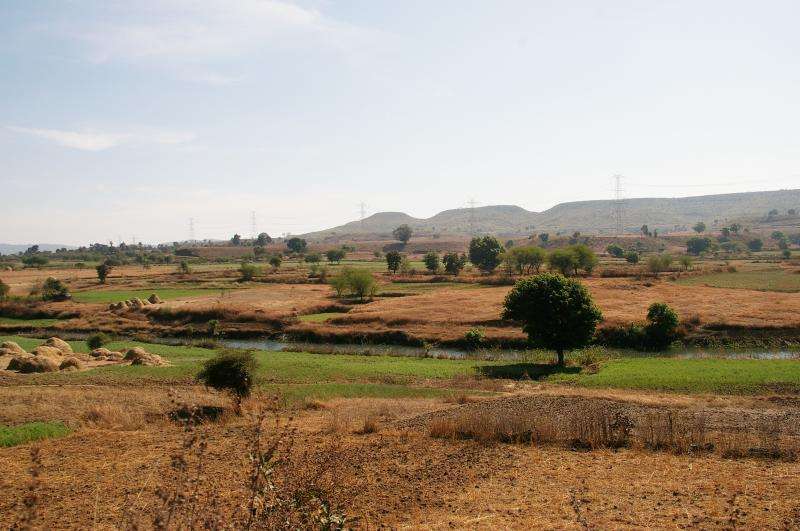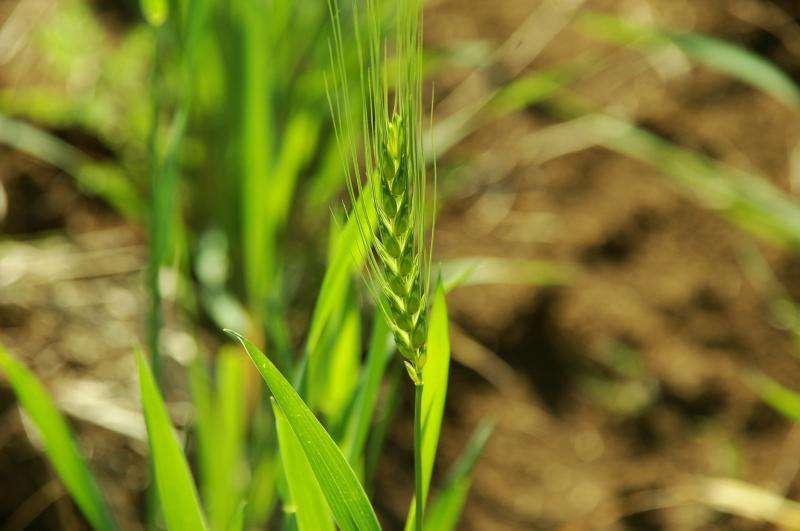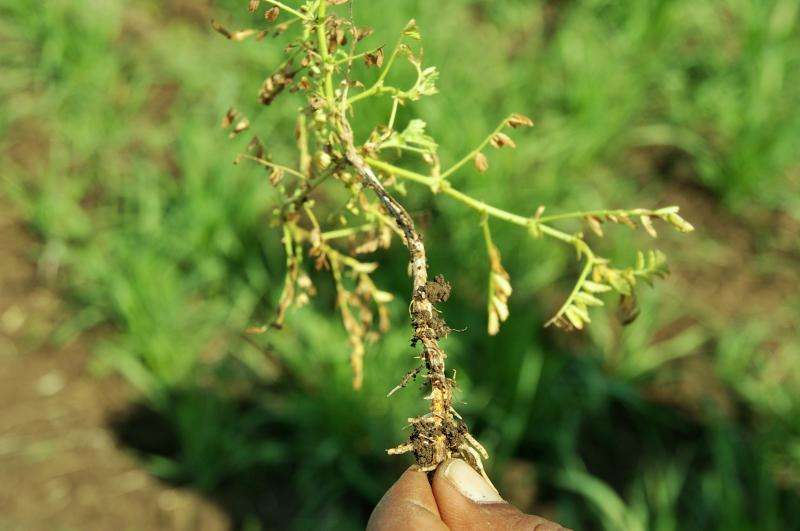Help for Indian small farmers in a changing climate

Between January and March this year, 257 farmers committed suicides just in the state of Maharashtra, India, according to an article published on June 27. These farmers, taking the brunt of an untimely rain and hailstorms, dreaded the financial loss they will have to face for a failed winter crop. The situation is particularly worse for subsistence farmers (who mostly grow food crops to feed their families), as the country witnessed a deficit in 2014 monsoon rainfall that adversely impacted production of major monsoon crops. With erratic monsoon rainfall predicted for coming decades, the future of smallholder farmers in India looks grim.
About half of the working Indian population depends on agriculture, directly or indirectly. A staggering number of 93 million farms are managed by smallholders who typically own less than 2 hectares of farmland. With no access to advanced infrastructure and resources, a majority of these smallholders depends on monsoon rain, which typically arrives in early June in southern India and advances northward thereafter.
The timing of the monsoon is critical, as farmers cannot transplant paddy (primary monsoon crop) saplings to a dry field. Since only 40 percent of the country's farmland is irrigated, most smallholders do not have any other choice than waiting for the monsoon onset. This year monsoon arrived four days late in the southern state of Kerala, and a "drought year" is predicted by the India Meteorological Department – the state-led institution. However, meteorologists at Skymet – a young Delhi-based forecasting agency – think that a "normal" monsoon is likely.
Monsoon predictability
So why do scientists from two agencies have different forecasts? A lot of this difference has to do with the way predictive models are built with different input factors. The Indian summer monsoon is not the easiest to predict. Monsoon onset and total monsoon rainfall can be driven by many interactions between ocean and atmosphere. A severe El Niño event resulting in an anomalously warm Indian Ocean, just like the one predicted for this year, can suppress monsoon rainfall over India. But these effects can be considerably modified by another atmospheric event called the "Indian Ocean Dipole."

A "positive" Indian Ocean Dipole, resulting in an anomalously warm western equatorial Indian Ocean compared to its eastern counterpart, can weaken the negative impacts of a strong El Niño. For example, the year 1997 was one of the strongest El Niño seasons in the last century, but ended up being a "normal monsoon" year in India, possibly due to the "positive" Indian Ocean Dipole effects.
The relationships between the Indian monsoon, El Niño and the Indian Ocean Dipole are becoming even more complex with various global warming effects. A paper published in Nature Communications last May reveals that "a considerable gap" exists between the prediction skill and predictability of the monsoon rainfall. The authors further argue that not considering new predictors for sea surface temperature and sea level pressure undermines the current monsoon forecasting capability.
Safety nets for farmers
With scientists still trying to increase the forecasting accuracy, it seems difficult for the farmers to plan well ahead of the season. Then who do they turn to in an adverse climatic event leading to financial loss? Indian Prime Minister Mr. Narendra Modi has plans for providing income-based insurance to millions of farmers by covering income losses due to both climatic events and fluctuations in crop prices. However, concerns have been voiced whether this scheme will actually benefit smallholders. This yield-based scheme will assess losses over a larger area covering multiple farms, so loss of a smallholder farmer can be skewed by benefits of a wealthy farmer who has access to better inputs (such as irrigation, fertilizer, better quality seeds). Moreover, the payouts will be made into bank accounts, so smallholders who often do not have them are not expected to receive benefits percolated through the Indian bureaucratic labyrinth. So how could the Indian smallholders be best protected in an era of changing climate?

According to a recently published report by the Consultative Group for International Agricultural Research, weather index-based insurance could be the answer. Formally introduced in India through a World Bank program in 2003, these index-based insurances are available to farmers in many Indian states and provide coverage against a range of climatic events including drought, flood, anomalous temperatures and high humidity or wind. To avail the benefits of this program, farmers are required to sign up for the available schemes through insurance companies. In case of an adverse climatic event, where adversity is measured by a previously agreed threshold, farmers receive payment checks to help them take immediate remedial action, such as purchasing improved quality seeds and replanting. While these schemes are slowly gaining traction in India, currently covering about 12 million farmers, significant effort needs to be made to reach a much higher proportion of India's rural population.
Towards a sustainable green economy
While a much-needed insurance reform is a welcome change in the Indian agricultural sector, enabling smallholders to be self-sufficient in the wake of climate change and India's alarming problem of groundwater depletion would be an added plus. Reducing poverty, while simultaneously minimizing the effects of climate change and unsustainable extraction of natural resources, however, is a tall order. An innovative scheme designed by the International Water Management Institute, based in Colombo, Sri Lanka, is set to achieve just that.
This scheme is currently being piloted in the state of Gujarat, where the institute last month announced it would make a payout to the very first farmer for his "solar crop." This scheme enables farmers to use solar-powered irrigation pumps, excess electricity from which can be sold back to the power grid. This buy-back option not only boosts farmers' income in a bad crop year, but also gives them incentives to save electricity by extracting less groundwater. A solar pump also helps reduce carbon emissions – a known factor altering natural weather patterns. While the success of this scheme is yet to be tested in other Indian regions, it looks like one step to the right direction.
More information: "Rethinking Indian monsoon rainfall prediction in the context of recent global warming." Nature Communications 6, Article number: 7154 DOI: 10.1038/ncomms8154
Journal information: Nature Communications
Provided by Columbia University


















